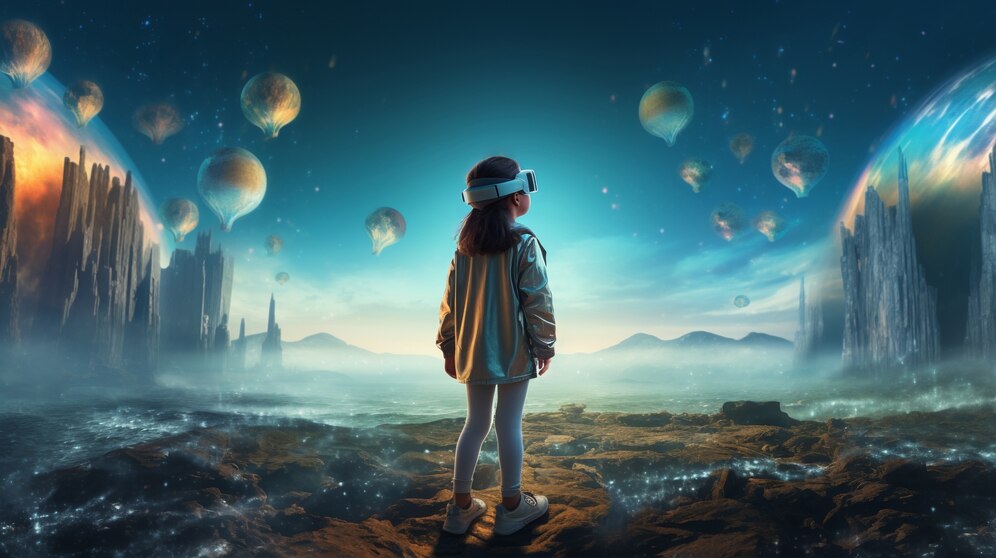Topic
Carpetten: A Comprehensive Guide

Carpetten often simply referred to as carpets, have been an integral part of interior design for centuries. From their humble beginnings as portable floor coverings for nomadic tribes to their evolution into versatile decorative elements in modern homes, carpets have undergone a fascinating journey. In this comprehensive guide, we’ll explore the rich history, diverse types, numerous benefits, maintenance techniques, environmental impact, and much more associated with carpetten. Whether you’re a homeowner looking to enhance your living space or a designer seeking inspiration, this guide will provide valuable insights into the world of carpets.
History of Carpets
The story of carpets traces back over 2,000 years to ancient civilizations in Central Asia. Nomadic tribes used carpets not only for warmth but also as practical flooring for their tents. As trade routes expanded, the art of carpet weaving spread to Persia, India, China, and eventually Europe. Traditional carpets, such as Persian or Oriental rugs, showcase intricate designs inspired by cultural motifs, reflecting the craftsmanship of generations. Over time, modern carpets have emerged, embracing contemporary aesthetics and innovative manufacturing processes to cater to diverse tastes and interior styles.
Traditional Carpets
Traditional carpets are crafted using time-honored techniques and often feature intricate designs inspired by cultural motifs. These carpets, such as Persian or Oriental rugs, are handwoven with exquisite details that reflect the craftsmanship of generations.
Modern Carpets
On the other hand, modern carpets embrace contemporary aesthetics and innovative manufacturing processes. They range from sleek and minimalist designs to bold and abstract patterns, catering to diverse tastes and interior styles.
Benefits of Carpetten
Carpetten offer numerous advantages beyond mere aesthetics. They provide insulation, helping to maintain room temperature and reduce energy costs. Additionally, carpets absorb sound, creating a quieter and more peaceful environment. Moreover, they offer a soft and cushioned surface, making them comfortable to walk on and safer for children to play.
How to Choose the Right Carpet
Selecting the perfect carpet involves considering various factors to ensure it complements your space and lifestyle. Begin by assessing the room size and layout to determine the appropriate carpet dimensions. Next, explore different materials, such as wool, nylon, or polyester, each offering unique characteristics in terms of durability, stain resistance, and texture. Additionally, consider the color and pattern of the carpet to harmonize with the existing decor and create the desired ambiance.
Maintenance Tips for Carpetten
Proper maintenance is essential to preserve the beauty and longevity of your carpets. Regular vacuuming removes surface dirt and debris, preventing them from embedding into the fibers. For spills and stains, prompt spot cleaning with mild detergent and water is recommended. Periodically, schedule professional carpet cleaning to deep clean and refresh the carpet, extending its lifespan.
Environmental Impact of Carpetten
While carpets provide comfort and style, their production and disposal can have environmental implications. However, advancements in sustainable materials and manufacturing processes have led to eco-friendly carpet options. Look for carpets made from recycled or natural fibers, as well as those certified by reputable environmental organizations.
Cost Considerations
The cost of carpetten varies depending on factors such as material, size, and quality. While high-quality carpets may require a larger initial investment, they often offer better durability and longevity, resulting in long-term cost savings. Consider your budget and priorities when selecting the right carpet for your space.
Carpet Installation Process
Installing carpet requires careful planning and professional expertise to ensure a flawless finish. The process involves preparing the subfloor, accurately measuring and cutting the carpet, and securing it in place with adhesives or tack strips. Hiring experienced installers is recommended to achieve optimal results and avoid costly mistakes.
Popular Carpet Trends
Carpet trends evolve with changing tastes and design preferences. Currently, popular trends include bold geometric patterns, textured carpets with depth and dimension, and sustainable materials like bamboo or cork. Experimenting with different shapes, sizes, and colors can add visual interest and personality to your space.
Carpet Accessories
In addition to the carpet itself, various accessories enhance its functionality and appearance. Rug pads provide cushioning and prevent slipping, while carpet runners add style and protection to high-traffic areas. Consider investing in quality accessories to optimize the performance and longevity of your carpet.
Carpet Care Myths Debunked
Several myths surround carpet care, leading to misconceptions about maintenance practices. Contrary to popular belief, frequent vacuuming does not damage carpets but rather preserves their appearance by removing dirt and allergens. Additionally, professional cleaning does not necessarily shrink or fade carpets when performed by trained technicians using appropriate methods and equipment.
Carpet Recycling and Sustainability
As sustainability becomes increasingly important, carpet recycling initiatives have gained momentum. Many manufacturers offer recycling programs that repurpose old carpets into new products, minimizing waste and conserving resources. By participating in these programs, consumers can contribute to a more sustainable future while enjoying the benefits of carpetten.
Conclusion
Carpetten are versatile and functional additions to any home or commercial space, offering warmth, comfort, and style. By understanding the various types, benefits, and maintenance practices associated with carpets, individuals can make informed decisions that enhance their living environments while minimizing environmental impact.
Topic
Exhentaime: Revolutionizing Time Management for a Balanced Life

In today’s fast-paced world, where every moment seems packed with tasks, responsibilities, and commitments, the need for effective time management has never been greater. But what if we shifted our focus from merely managing time to truly optimizing it? Enter Exhentaime, a time management method that combines traditional techniques with modern insights to help individuals streamline their daily routines, prioritize their goals, and restore balance to their lives. Rather than focusing on the quantity of tasks, Exhentaime emphasizes the quality of time spent and the intention behind each action.
The Birth of Exhentaime
Exhentaime is a modern-day adaptation of traditional time management practices, blending age-old wisdom with contemporary understanding of mental well-being, work-life balance, and personal growth. The term itself is a fusion of “Exhent,” which suggests a state of clarity or mindfulness, and “aime,” representing the French word for “love” or “care.” This symbolic union represents a time management technique rooted in intentionality, self-awareness, and compassion.
At its core, Exhentaime challenges the traditional mindset of filling every minute with activity. Instead, it calls for a more thoughtful approach—one that involves reflecting on your values, goals, and priorities before deciding how to allocate your time. The method seeks to create a harmonious balance between productivity and tranquility, ensuring that the time you invest is both purposeful and rejuvenating.
Intentionality Over Busyness
In a world where “busy” has become synonymous with “productive,” Exhentaime offers a refreshing perspective. The method encourages individuals to stop chasing after constant activity and instead focus on the tasks that align most closely with their long-term aspirations.
Intentionality in time management refers to consciously deciding what deserves your attention. Are you filling your schedule with activities that help you progress toward your goals? Are you spending time on things that nourish your mind and spirit? Or are you simply responding to external demands without considering their true value?
Exhentaime empowers you to answer these questions by providing strategies for prioritization. By focusing on what truly matters, the method advocates for quality over quantity, guiding users to create space for both productivity and creative pursuits. This way, every task you engage in serves a greater purpose, leading to a more fulfilling and balanced life.
A Holistic Approach to Time Management
Unlike conventional time management methods that focus solely on task completion, Exhentaime takes a holistic approach, incorporating aspects of personal growth, well-being, and mental clarity. It acknowledges that time management is not just about getting things done, but also about preserving energy and mental health.
Exhentaime encourages individuals to assess their routines not just for their efficiency but also for their emotional and psychological impact. Are the tasks you’ve set for yourself contributing to your personal growth, or are they draining your energy? The method suggests integrating breaks, moments of reflection, and leisure activities into your schedule, which are just as essential to your overall productivity and creativity as work-related tasks.
This method goes beyond simply optimizing working hours; it creates space for relaxation, self-care, and mindful practices, all of which contribute to a healthier and more balanced lifestyle.
Crafting a Personalized Exhentaime Routine
One of the most appealing aspects of Exhentaime is its adaptability. Unlike one-size-fits-all time management systems, Exhentaime can be tailored to suit individual needs, schedules, and life stages. The key lies in understanding your unique values, priorities, and rhythms.
To begin crafting your Exhentaime routine, start by identifying your core values. What is most important to you in life? Whether it’s career growth, personal relationships, health, or creativity, identifying your values allows you to align your daily tasks with these principles. This brings a sense of fulfillment to even the most mundane tasks, as they become a part of a larger vision.
Next, Exhentaime encourages breaking down your day into segments that honor both your work and personal needs. Schedule time for reflection, relaxation, or engaging in activities that reignite your passions. The idea is not to overcrowd your calendar with appointments but to create a rhythm that balances output with restoration.
As with any new method, it’s important to start small. Introduce Exhentaime into your daily life in manageable increments, gradually allowing it to evolve with your changing priorities. This gradual approach prevents overwhelm and ensures long-term sustainability.
The Power of Reflection and Self-Awareness
Exhentaime places great importance on self-awareness, encouraging individuals to pause regularly and reflect on their goals, accomplishments, and emotional states. This practice of reflection helps to identify any misalignments between daily activities and long-term aspirations.
Journaling is one of the most powerful tools within Exhentaime. Taking a few minutes each day to write down thoughts, feelings, and observations not only helps clarify what’s important but also creates a sense of ownership over your time. It allows you to see patterns in your behavior, recognize any time-wasting habits, and course-correct where necessary.
Reflection also supports mental well-being, providing an opportunity to release any mental clutter and refocus on what truly matters. By incorporating self-awareness into time management, Exhentaime nurtures a sense of inner peace and direction.
Exhentaime and Personal Growth
Personal growth is an integral component of Exhentaime. The method does not solely focus on external productivity but also on cultivating internal growth and self-improvement. It encourages you to set intentional, meaningful goals that align with your values, fostering a deep sense of purpose in your daily activities.
By engaging in time management practices that are both strategic and mindful, Exhentaime helps users discover their potential, strengthen their decision-making abilities, and build resilience in the face of challenges. This not only enhances productivity but also promotes long-term success and fulfillment.
Incorporating Exhentaime into your life can lead to profound personal transformation, as it cultivates qualities such as discipline, focus, and self-compassion. Over time, you may notice an increased ability to prioritize your time wisely, a stronger connection with your deeper desires, and a greater sense of balance in all aspects of your life.
Creating Space for Creativity and Tranquility
In the modern world, many people feel overwhelmed by the constant demands of work, family, and social commitments. Exhentaime provides a remedy for this by emphasizing the importance of creating space for creativity and tranquility amidst the busy schedule.
Creativity is often stifled by the pressure to “do more,” but Exhentaime believes that in order to be truly creative, we must give ourselves the freedom to think, explore, and rest. Whether you’re an artist, entrepreneur, or simply someone trying to bring more innovation into your life, Exhentaime encourages you to build time for creative expression into your routine.
Likewise, tranquility is essential for mental clarity and stress reduction. By scheduling time for solitude, nature walks, or simply sitting in stillness, Exhentaime fosters an environment where peace can thrive even in the midst of busy days.
The Broader Impact of Exhentaime
The broader impact of Exhentaime extends beyond the individual. By promoting intentionality, balance, and mindfulness, Exhentaime has the potential to transform workplace cultures, families, and communities. In organizations, employees who adopt Exhentaime may experience less burnout and greater overall satisfaction, as they are encouraged to prioritize their well-being alongside productivity.
Exhentaime also promotes a more sustainable lifestyle, one where individuals do not view time as a scarce resource to be exploited, but rather as a valuable asset to be invested wisely. This shift in mindset can lead to more mindful consumption, healthier work habits, and a greater sense of global responsibility.
Transforming Our Perception of Productivity
The ultimate goal of Exhentaime is to transform our perception of productivity. In a world that often prioritizes speed and output, Exhentaime reminds us that productivity is not just about getting more done; it’s about getting the right things done with intention and purpose. By embracing this new approach, we can break free from the cycle of busyness and cultivate a life that reflects our deepest values and aspirations.
Incorporating Exhentaime into your life allows you to manage time in a way that supports personal growth, nurtures creativity, and ensures that your daily actions align with your long-term goals. By prioritizing meaningful tasks and engaging in regular self-reflection, Exhentaime enables individuals to live more fulfilling, balanced lives—one where time becomes a tool for transformation rather than a source of stress.
Conclusion
Exhentaime is more than just a time management method; it’s a philosophy for living with intention, purpose, and balance. By embracing this approach, individuals can free themselves from the tyranny of constant busyness and rediscover the joy of living in alignment with their values. Exhentaime encourages us to take control of our time, cultivate self-awareness, and create space for both productivity and relaxation. In a world that constantly demands more, Exhentaime is the answer to living a life that truly matters.
Topic
AI Video Creation for Social Media: Boost Your Engagement Today

Harnessing the power of artificial intelligence (AI) in video creation has revolutionized the way brands engage with their audience on social media platforms. In this digital era, where visual content is king, AI video creation offers a dynamic and efficient means to captivate viewers and boost engagement. From personalized storytelling to targeted messaging, the potential of AI in video content creation is vast. This article delves into the realm of AI video creation for social media, exploring the benefits, best practices, tools, and strategies to effectively leverage this innovative technology and amplify your online presence.
Introduction to AI Video Creation for Social Media
In a world where cat videos reign supreme, mastering the art of AI video creation for social media can give your content the edge it needs to stand out in the algorithmic jungle.
AI isn’t just a buzzword thrown around by tech enthusiasts—it’s the secret sauce behind creating captivating video content. From automated editing to personalized recommendations, AI is the behind-the-scenes wizard that makes your videos pop.
Importance of Video in Social Media Marketing
Let’s face it: text posts are so 2000-and-late. Video is the king of content on social media, with studies showing that video content marketing drives more engagement, shares, and overall love from the algorithm gods.
Benefits of Using AI for Video Content
AI isn’t just here to steal our jobs – it’s here to make our lives easier, especially when it comes to creating killer video content for your social media feeds.
Say goodbye to endless hours spent tweaking transitions and color grading. AI-powered tools can streamline your video production process, leaving you more time to perfect that TikTok dance routine.
Personalization and Targeted Content Creation
Gone are the days of generic content that speaks to no one in particular. AI can help you create personalized videos tailored to your audience’s preferences, ensuring that each view feels like a warm hug from the internet.
Best Practices for AI Video Creation
While AI is a powerful ally in your video creation journey, knowing how to wield this digital sword is key to unlocking its full potential for your social media strategy. Not all AI tools are created equal. Finding the right one that aligns with your creative vision and technical needs can make all the difference between a viral hit and a content flop.
Optimizing Video Elements for Maximum Impact
From eye-catching thumbnails to snappy captions, every element of your video plays a crucial role in captivating your audience’s attention. Learn how to optimize these elements for maximum impact and engagement.
Tools and Platforms for AI Video Creation
With a smorgasbord of AI video creation platforms at your disposal, choosing the right one can feel like picking the best flavor at an ice cream parlor. Here’s a scoop of information to help you make an informed decision.
From beginner-friendly platforms to advanced editing suites, the world of AI video creation is vast and varied. If you’re looking for the perfect tool, you can use this AI video creation tool that takes your content to the next level. It automatically writes the script, adds visuals generated with AI, incorporates voiceovers, subtitles, music, and more. This powerful tool makes creating publish-worthy videos for any topic effortless and efficient, whether you’re crafting a TikTok sensation or a professional ad campaign.
Maximizing Engagement Through AI Video Content
Understanding Social Media Algorithms and Video Engagement
Ever wondered why your cat video gets more likes than your heartfelt posts? It’s not your cat’s charm; it’s social media algorithms at play. Dive into the world of algorithms and learn how to crack the code for boosting video engagement.
AI isn’t just for robots; it’s your secret weapon for creating thumb-stopping videos. From personalization to data-driven insights, discover how AI can supercharge your video content and keep your audience hooked.
Case Studies: Successful AI Video Campaigns
Analysis of Real-World Examples of AI Video Success
Take a peek behind the curtain of top-performing AI video campaigns. Learn what makes them tick, their secret sauce for success, and how you can apply these strategies to level up your own video game.
Forget textbooks; real-life examples are where the juicy lessons hide. Uncover the key takeaways from successful AI video campaigns and walk away armed with actionable insights to skyrocket your engagement.
Future Trends in AI Video Creation for Social Media
Emerging Technologies Shaping the Future of AI Video Creation
Buckle up for a wild ride into the future of video creation. From deepfakes to VR integration, explore the cutting-edge technologies that will shape the way we create and consume AI-driven videos on social media.
Predictions for the Evolution of AI Video in Social Media Marketing
Crystal balls are so last season. Discover the top predictions for AI video evolution in social media marketing. Will AI take over the world, or will we still be the masters of our video destiny? Only time will tell.
As the landscape of social media continues to evolve, integrating AI video creation into your marketing strategy can be a game-changer for enhancing engagement and driving results. By embracing the efficiency, personalization, and impact that AI-powered videos offer, brands can stay ahead of the curve and connect with their audience in more meaningful ways. Embrace the future of video content creation with AI technology and watch your social media engagement soar to new heights.
Topic
Cevurı: A Catalyst for Change and Transformation

Cevurı may not be a familiar term for many, but it embodies a profound potential that is steadily gaining recognition across various domains. The word itself encapsulates the concept of transformation—of driving unique change and facilitating innovation. As modern challenges increasingly require dynamic solutions, Cevurı stands as a beacon for progress and the continual evolution of methods designed to produce superior results.
The Essence of Cevurı
To understand Cevurı, it is essential to delve into its essence. The term refers to a tool, concept, or framework that embodies the spirit of innovation and continuous development. Cevurı is not just about introducing something new for novelty’s sake; it is about the pursuit of meaningful change, adaptation, and sustainable improvement. In this way, Cevurı symbolizes a shift toward smarter approaches in handling complex issues, whether in technology, education, healthcare, or business.
The roots of Cevurı trace back to the natural human desire for advancement and the relentless pursuit of progress. Throughout history, societies have been built upon the shoulders of thinkers, innovators, and leaders who understood the necessity of embracing change. However, what sets Cevurı apart is its focus on creating structured transformations that are both effective and future-oriented. Rather than change for the sake of change, it emphasizes purpose-driven shifts that leave a lasting impact.
Innovation as the Core of Cevurı
At the heart of Cevurı is innovation, a concept that has been a driving force behind much of humanity’s success. The essence of innovation in the context of Cevurı lies in leveraging both traditional and modern resources to craft creative solutions that surpass conventional expectations. This drive for creativity has fueled significant advancements in various sectors, from groundbreaking technological inventions to shifts in how organizations approach problem-solving.
The connection between Cevurı and innovation can be seen in numerous ways. For instance, technology companies often embody the Cevurı mindset by investing in research and development that pushes the boundaries of what is possible. Whether through artificial intelligence, renewable energy, or data-driven insights, the principles of Cevurı manifest as bold and transformative advancements that reshape industries.
Similarly, the academic field benefits from the Cevurı approach by embracing new teaching methodologies and research practices. The education system is undergoing a transformation driven by a recognition that traditional methods may not always serve the modern learner. By incorporating technology, interactive learning platforms, and interdisciplinary studies, education becomes more effective, engaging, and aligned with the needs of the future.
The Role of Cevurı in Business and Industry
Cevurı’s impact extends far beyond technology and academia, penetrating the world of business and industry. In these sectors, the concept plays a critical role in reshaping how organizations operate, innovate, and stay competitive. Businesses today face an ever-changing landscape, driven by consumer demands, global market shifts, and evolving technological trends. The Cevurı philosophy encourages companies to be agile, proactive, and forward-thinking.
One of the key ways businesses adopt Cevurı is through process optimization and strategic transformation. Companies are continually seeking new ways to improve efficiency and deliver value to their customers. This might involve adopting automation technologies, redesigning supply chains, or implementing more flexible workplace policies to attract and retain top talent. In each case, the emphasis is on making deliberate and data-driven changes that position the organization for long-term success.
Moreover, Cevurı often translates into a commitment to sustainability and corporate social responsibility. Many companies are now recognizing that business success is closely tied to the well-being of the planet and society. By incorporating environmental, social, and governance (ESG) criteria into their business strategies, these organizations demonstrate a Cevurı-driven mindset that aims to create positive, systemic change while ensuring economic viability.
Cevurı in Healthcare: Transforming Lives
Healthcare is another domain where Cevurı holds transformative potential. The industry has long been characterized by innovation and advancements that save lives and improve health outcomes. However, the complexities of modern healthcare demand an even more comprehensive application of Cevurı principles to overcome persistent challenges such as rising costs, aging populations, and global health crises.
One prominent example of Cevurı in healthcare is the integration of digital health solutions. The adoption of telemedicine, wearable health monitors, and AI-powered diagnostic tools has revolutionized the way healthcare providers interact with patients. These innovations have made healthcare more accessible and personalized, while also enabling better data collection and analysis for improved treatment plans. The pandemic underscored the importance of agility and rapid adaptation, and Cevurı was at the forefront of driving these changes.
Furthermore, the push toward personalized medicine exemplifies the Cevurı ethos in action. By leveraging genetic information and patient-specific data, personalized treatments are becoming a reality, offering more effective and less invasive interventions. The potential of Cevurı to revolutionize healthcare lies not only in cutting-edge technologies but also in the reimagining of healthcare delivery systems, emphasizing prevention, early intervention, and holistic patient care.
Education and the Evolution of Learning
Education is a pillar of society, shaping generations to come and driving economic and social progress. Cevurı’s influence on education is profound, as it addresses the evolving needs of students in a rapidly changing world. The traditional model of education, which has remained largely unchanged for decades, is being challenged by new approaches that are more in line with how people learn and work today.
One aspect of Cevurı in education is the emphasis on experiential and collaborative learning. This approach moves beyond rote memorization to focus on hands-on experiences, problem-solving, and real-world applications. Technologies like virtual and augmented reality are being used to create immersive learning environments, making subjects like history, science, and art come to life in new and exciting ways. By fostering engagement and curiosity, these methods align with Cevurı’s goal of enhancing learning outcomes.
Additionally, Cevurı emphasizes inclusivity and accessibility in education. The digital revolution has made it possible for students from all backgrounds to access high-quality educational resources. Online platforms, open educational resources (OER), and adaptive learning technologies are breaking down barriers to education, providing equal opportunities for learners regardless of their circumstances. This democratization of education is a key element of Cevurı’s transformative impact.
The Social Impact of Cevurı
Beyond the realms of business, healthcare, and education, Cevurı also has the power to drive social change. As communities and societies face unprecedented challenges, from climate change to social inequality, the principles of Cevurı can be harnessed to create more resilient and equitable systems. This involves not just technological innovation but also cultural and organizational change that prioritizes collaboration, inclusivity, and ethical responsibility.
Social impact organizations and nonprofits are increasingly adopting a Cevurı mindset, experimenting with innovative approaches to address complex social problems. These might include using data analytics to better understand and serve communities, developing scalable solutions for affordable housing, or fostering grassroots movements that advocate for policy change. By embracing a spirit of experimentation and adaptability, these organizations can achieve lasting impact.
Challenges and Considerations
While the potential of Cevurı is vast, it is not without challenges. One significant obstacle is resistance to change, which can be deeply ingrained in institutions and cultures. People are often comfortable with familiar methods and may be hesitant to adopt new ways of thinking and working. Overcoming this resistance requires strong leadership, clear communication, and a shared vision of the benefits that Cevurı-driven change can bring.
Additionally, the rapid pace of change can be overwhelming, particularly for smaller organizations or communities that lack the resources to keep up. Ensuring that the benefits of Cevurı are equitably distributed is crucial, as is providing adequate support and training for those affected by transformative initiatives. Ethical considerations must also be addressed, especially when it comes to technology-driven changes that could have unforeseen consequences.
The Future of Cevurı
As the world continues to evolve, the relevance of Cevurı will only increase. The coming years will likely see even more integration of Cevur’ı principles into everyday life, driving advancements in artificial intelligence, renewable energy, and societal structures. The concept serves as a reminder that change, when thoughtfully and purposefully implemented, can lead to extraordinary outcomes.
In the end, Cevurı is about embracing the unknown and finding ways to turn challenges into opportunities. It is a call to action for individuals, organizations, and societies to think creatively, act boldly, and remain committed to progress. As more people and institutions adopt a Cevurı mindset, the potential for positive, transformative change will continue to grow, shaping a future that is as exciting as it is promising.
Conclusion
Cevurı represents more than just a term; it embodies a philosophy of transformation and progress. Its emphasis on meaningful, purpose-driven change holds the potential to revolutionize various aspects of society, from business and healthcare to education and social impact. By prioritizing innovation, adaptability, and sustainability, Cevurı encourages individuals and organizations to rethink conventional methods and explore new avenues for improvement.
The future of Cevurı is one of hope and possibility. As the concept continues to take root and evolve, its influence will be felt in countless ways, shaping a world that is more dynamic, resilient, and forward-thinking. Embracing Cevurı means embracing the power of innovation to tackle the challenges of today and pave the way for a brighter, more interconnected tomorrow. The journey of Cevurı is one that invites everyone to participate, to be part of the transformation, and to contribute to the building of a better future for all.

 Nail Salons9 months ago
Nail Salons9 months agoNail Salons in Ridgewood, NJ

 Topic7 months ago
Topic7 months agoMakoshake: A Popular Model and Cam Girl

 Topic7 months ago
Topic7 months agoEvolved Fights: Where Mixed Wrestling Meets Adult Entertainment

 Business7 months ago
Business7 months agoSkyWestOnline: Empowering Employees with Essential Resources

 Topic8 months ago
Topic8 months agoEmbracing the Paradox of Retroya: Where Past and Future Collide

 Topic8 months ago
Topic8 months agoFruit of the Loom: Cornucopia Logo Fact Check

 Nail Salons9 months ago
Nail Salons9 months agoNail Salons in Meriden, CT

 Uncategorized8 months ago
Uncategorized8 months agoExploring Rutube: Russia’s Dynamic Video Platform















